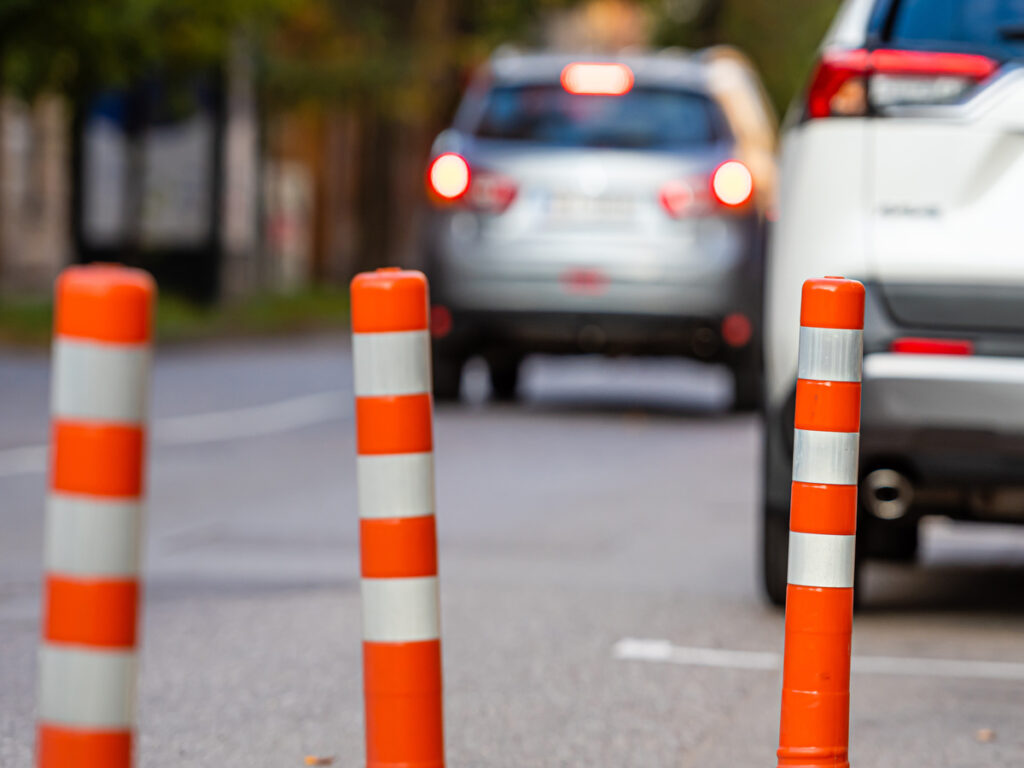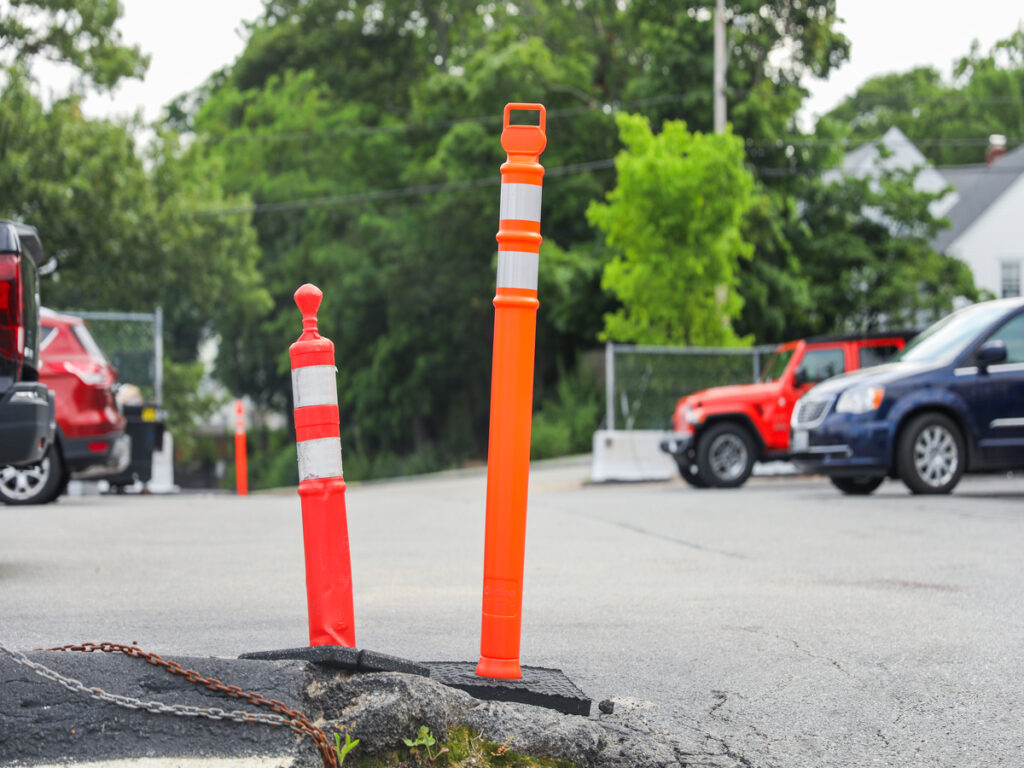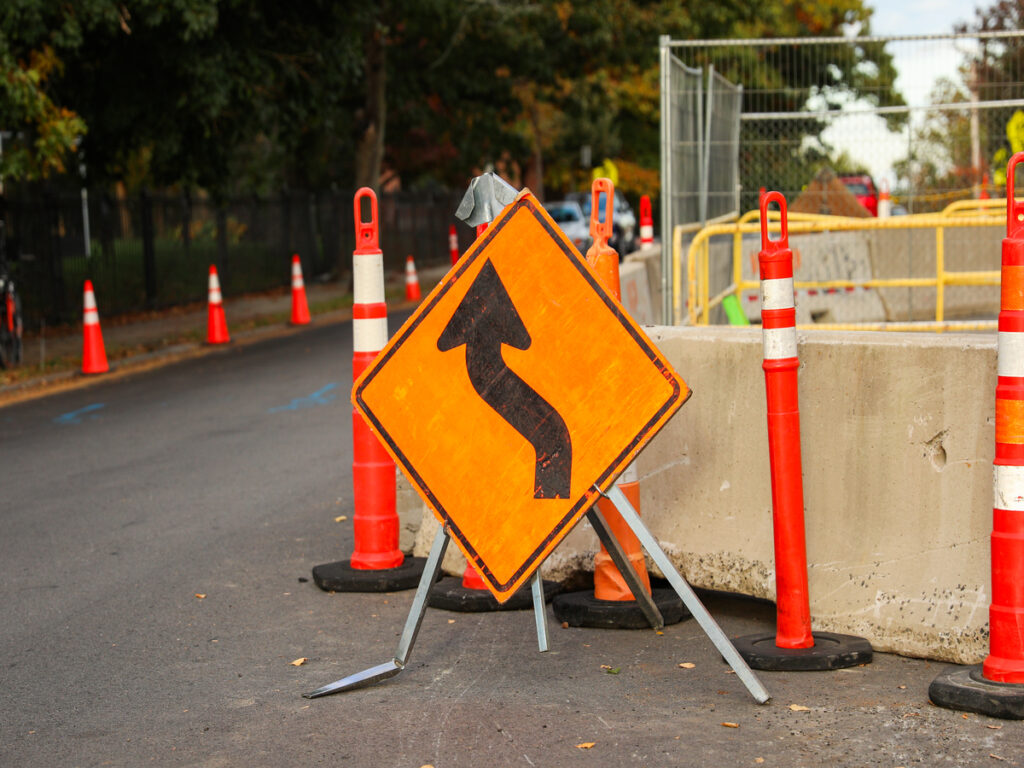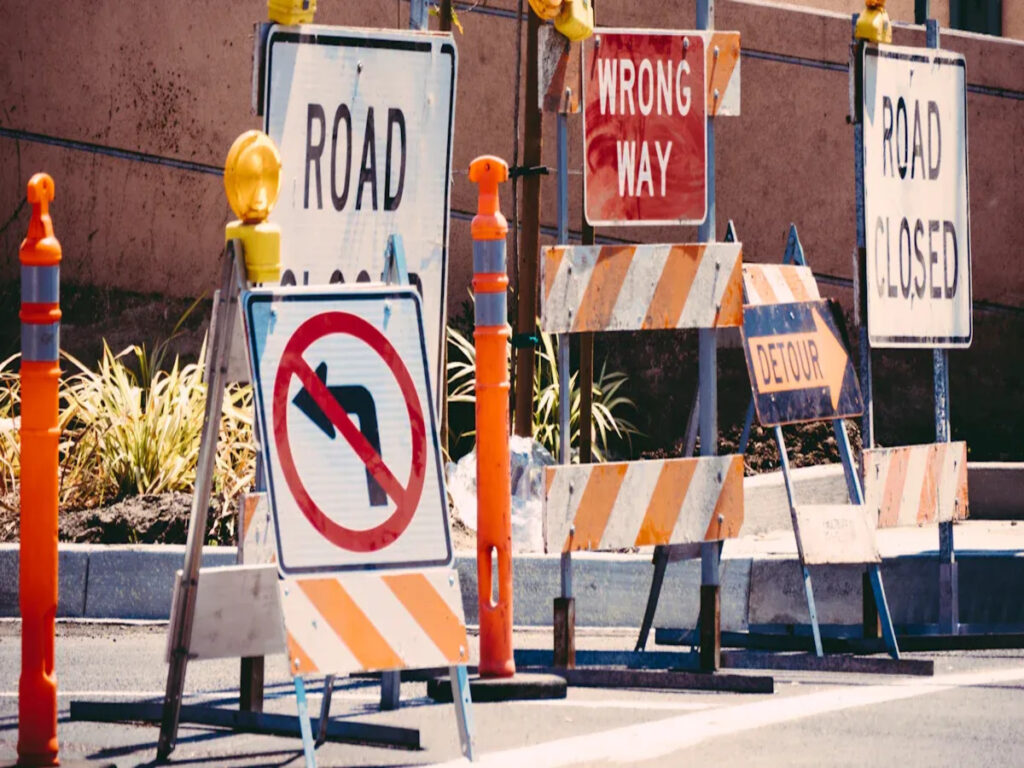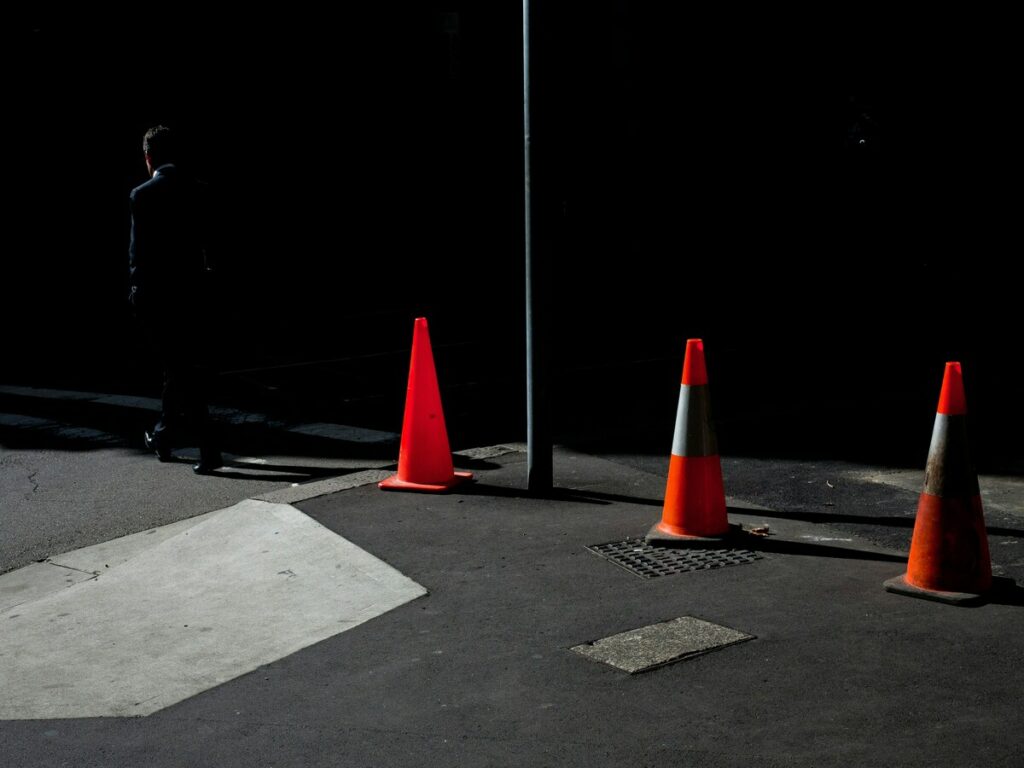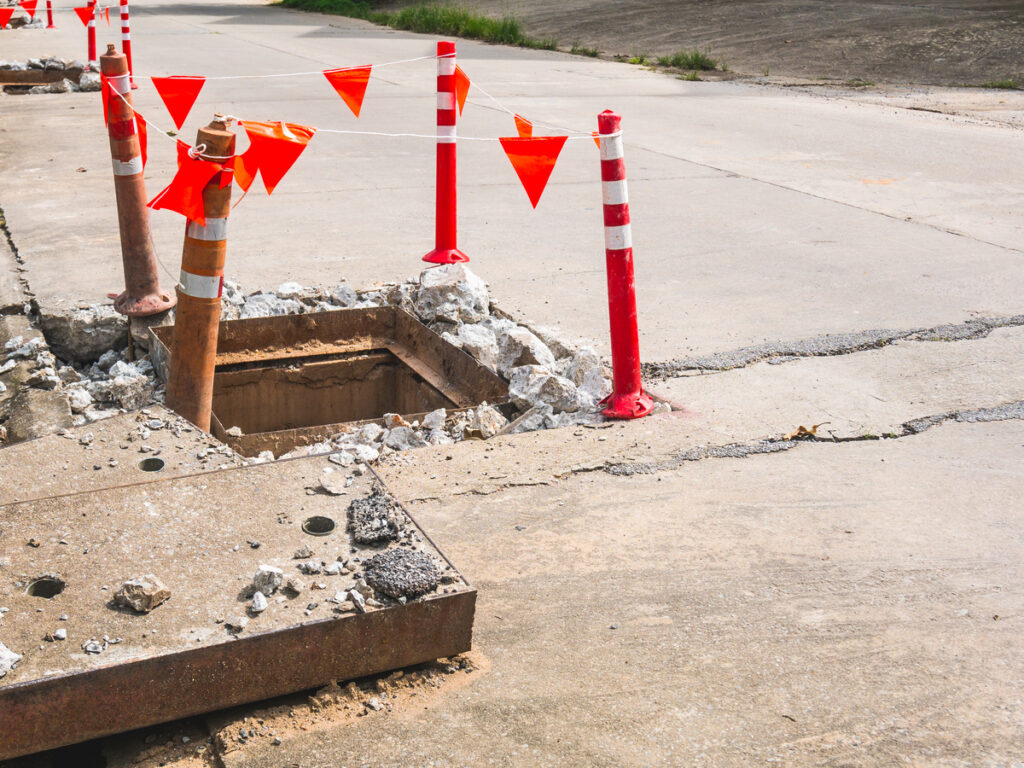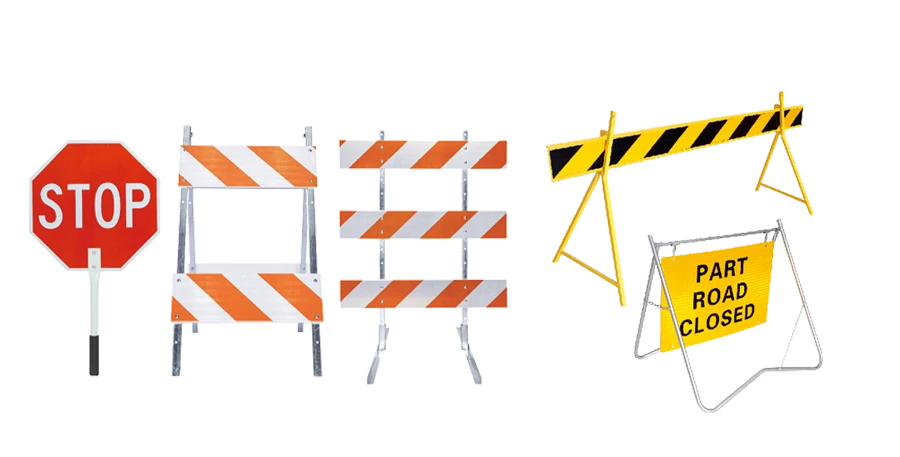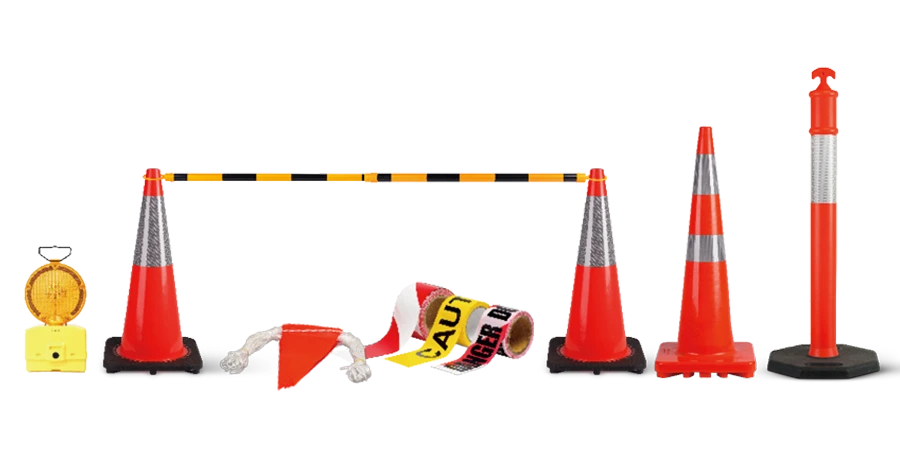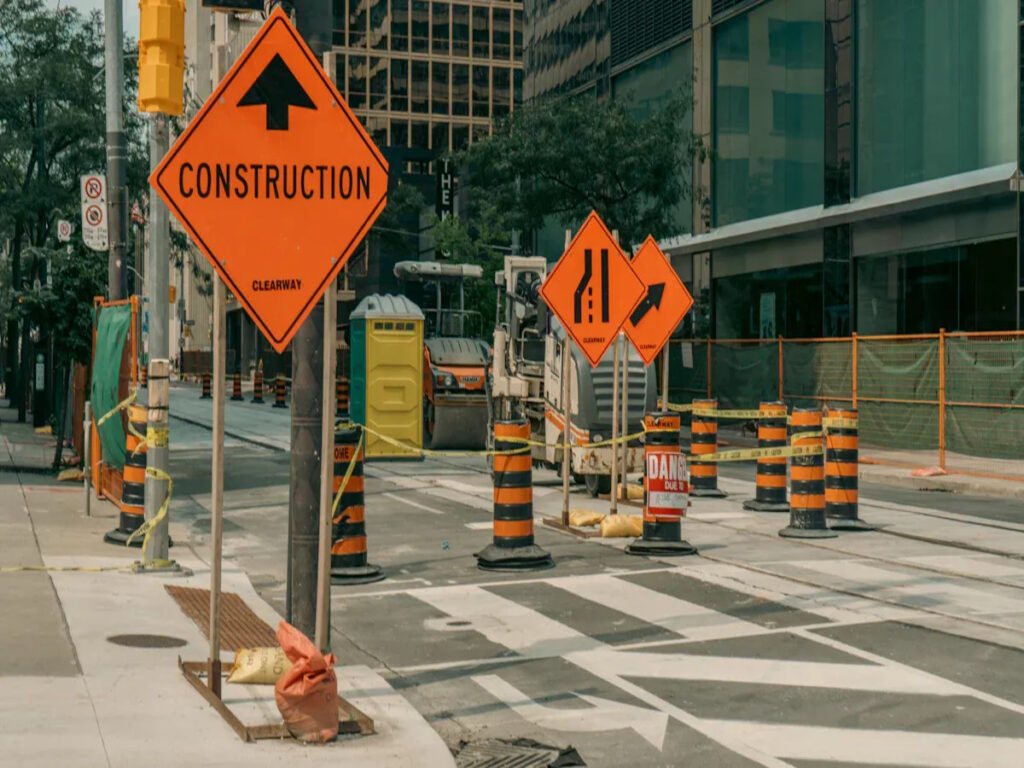
대형 도로 공사 표지판은 안전에 매우 중요합니다. 그들은 건설 구역을 모든 사람에게 안전하게 유지하는 데 도움이됩니다. 건설 회사는 엄격한 안전 규칙을 따라야합니다. 교통 관리 팀과 간판 임대 제공 업체 도이 규칙을 따라야합니다.. 이 도로 건설 교통 표지판은 작업장을보다 쉽게 볼 수 있도록합니다.. 그들은 바쁜 장소를 통해 자동차와 사람들을 안내하는 데 도움이됩니다. 규칙을 충족합니다, 팀은 신중하게 계획해야합니다. 그들은 징후를 올바른 방법으로 올려야합니다. 그들은 또한 표시를 자주 확인해야합니다. 이 표시를 움직이고 배치하는 것은 어려울 수 있습니다. 표지판이 크고 무겁기 때문입니다. 모든 표시는 법에 의해 설정된 규칙을 따라야합니다.. 이것은 모든 도로 사용자를 안전하게 유지하는 데 도움이됩니다. 이 징후를 잘 관리하면 모든 사람이 규칙을 따르는 데 도움이됩니다.. 또한 모든 작업 구역을 더 안전하게 만듭니다.
Optraffic에서, 많은 고객이 우리의 고품질에 의존하는 건설 회사입니다. 도로 공사 표지판 작업 영역을 안전하고 준수하는 것을 유지합니다. 우리는 내구성을 제공합니다, 모든 안전 표준을 충족하는 대형 표시, 프로젝트가 원활하고 안전하게 실행되도록합니다. 건축 교통 관리 요구를 지원하기 위해 오늘 우리의 범위를 탐색하십시오..
도로 공사 표지판: 유형과 도전
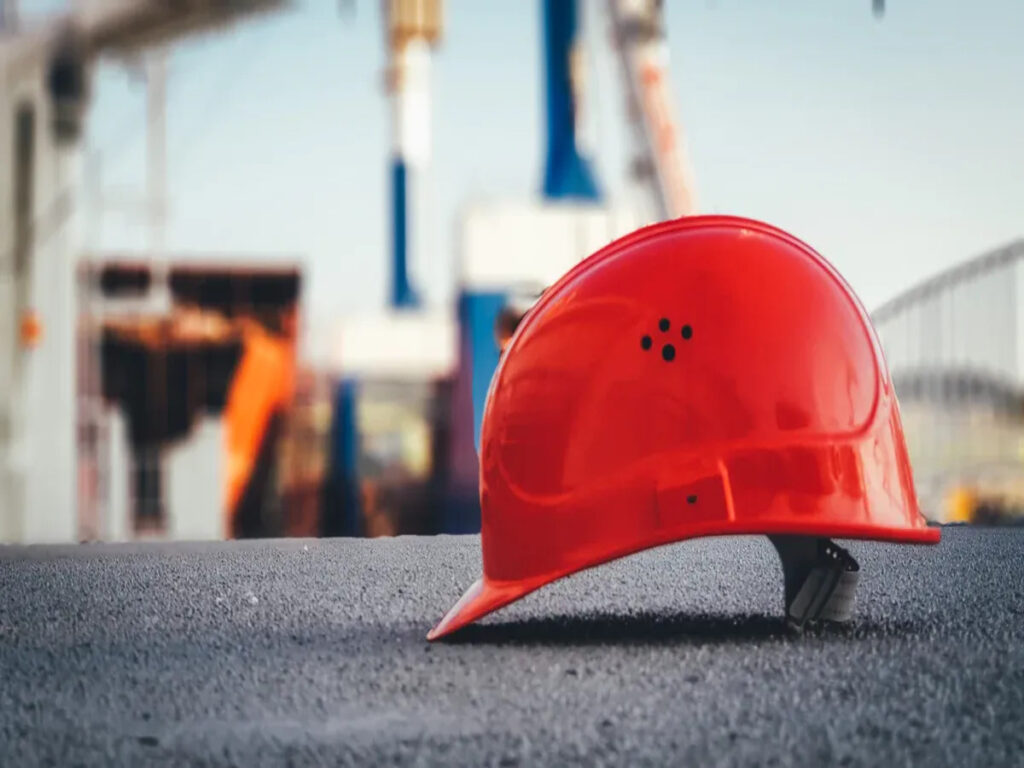
대형 간판이 설명되었습니다
대형 도로 공사 표지판은 건설 구역에서 매우 중요합니다. 이것들 표지판에는 T- 시리즈 모델이 포함됩니다 T1-1처럼, T2-1, 그리고 T3-1. 도로 건설 교통 표지판은 다양한 모양과 크기로 제공됩니다.. 각 유형은 특별한 직업을 위해 만들어집니다. 몇 가지 일반적인 유형입니다:
- A- 프레임 바리케이드는 가볍고 차선 또는 포장 도로를 닫는 데 좋습니다..
- 물로 가득 찬 바리케이드 마지막으로 길고 큰 프로젝트에 사용됩니다.
- 군중 제어 바리케이드는 강철 또는 플라스틱이며 사람들이 걷는 사람들을 안내합니다..
- 수직 패널은 운전자를 돕기 위해 다른 표지판과 함께 작동합니다.
- 콘크리트 장벽은 강하고 고속도로에서 보호합니다.
| 사인 유형 | 일반적인 대형 치수 (신장) |
|---|---|
| 수평 정렬 | 48 엑스 48 |
| 조합 수평 정렬/자문 속도 | 48 엑스 48 |
| 1 방향 큰 화살표 | 60 엑스 30 |
| 2 방향 큰 화살표 | 60 엑스 30 |
| 쉐브론 정렬 | 24 엑스 30 |
대형 간판은 사람들이 바쁜 곳에서 교통 표지를 볼 수 있도록 도와줍니다.. 표지판은 올바른 크기이어야하며 올바른 지점에 넣어야합니다.. 예를 들어, 고속도로 보드는 종종보다 큽니다 1200 mm by 800 mm. 이 징후는 높이 올려있어 운전자는 자동차를 통해 볼 수 있습니다.. 깜박이는 LED 화살표 보드 반짝이는 재료는 표지판을 더 명확하고 안전하게 만듭니다, 특히 밤이나 비가 올 때.
일반적인 문제
대형 도로 공사 표지판에는 많은 문제가 있습니다. 큰 도로 건설 교통 표지판 이동 특수 트럭과 좋은 계획이 필요합니다.. 무거운 표지판은 들어 올리고 설치하기가 어렵습니다. 팀은 상처를 입는 사람을 막기 위해주의해야합니다.
날씨는 또한 표지판에 문제를 일으킬 수 있습니다. 강한 바람이나 폭풍은 징후가 움직이거나 파손될 수 있습니다. 강력한 재료를 사용하면 신호가 안전하고 쉽게 볼 수 있습니다.. 올바른 장소에 표지판을 두는 것도 어렵습니다. 표시가 운전자가 보거나 혼란스럽게하는 것을 차단해서는 안됩니다.. 사전 경고 표시와 우회 표시가 충분히 멀어야하므로 운전자는 준비 할 시간이 있습니다..
교통 관리 팀은 표시를 자주 확인해야합니다. 부서 지거나 잃어버린 표지판은 충돌을 일으키거나 트래픽이 느려질 수 있습니다.. 임시 교통 통제에는 명확하고 잘 배치 된 도로 공사 표지판이 필요합니다. 모든 규칙을 따르는 경우, 경고를 앞두고 도로 작업, 우회 경로, 사전 경고 표시는 근로자와 도로 사용자를 안전하게 유지합니다..
안전 및 설치
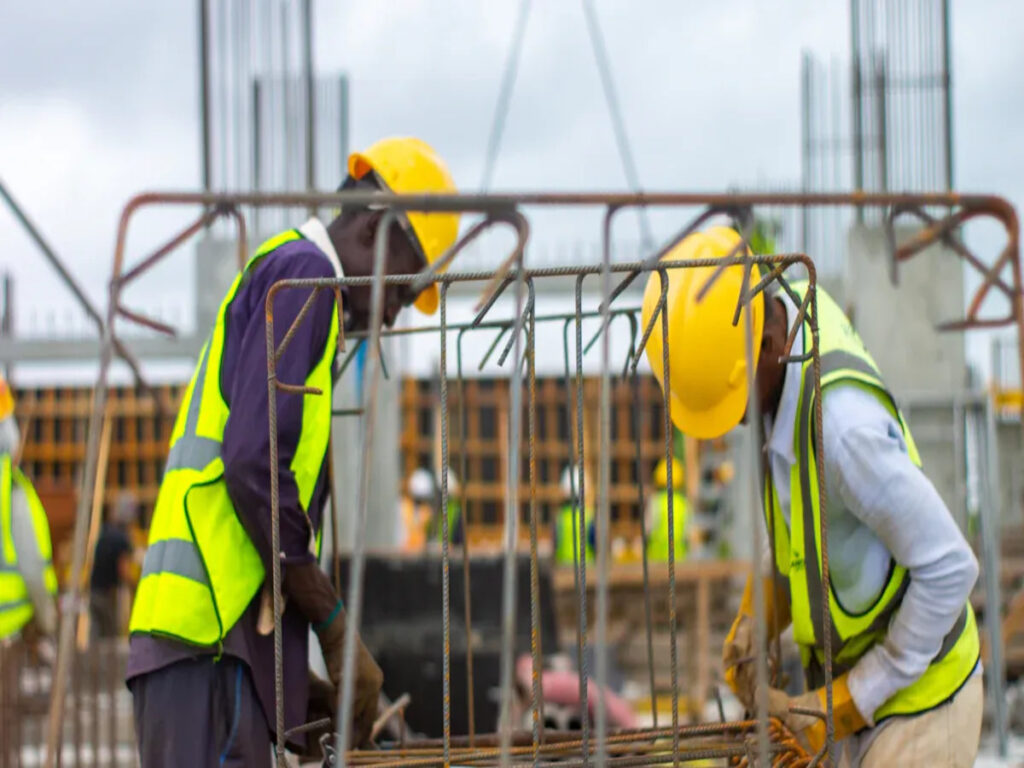
사이트 준비
안전한 부호 배치에 사이트를 준비하는 것은 매우 중요합니다.. 팀은 필요한 모든 도구와 장비를 수집합니다, 훈련처럼, 패스너, 사다리, 그리고 안전 장비. 근로자는 각 부호에 손상 또는 누락 된 부품이 있는지 확인합니다. 또한 시작하기 전에 전기 부품을 테스트합니다. 팀은 신중한 측정을 사용하여 표지판이 어디로 가야하는지 표시합니다.. 이것은 신호가 교통 상황에 직면하고 쉽게 볼 수 있도록 도와줍니다..
다음, 노동자들은 토양을 테스트합니다. 그들은 유형을 봅니다, 얼마나 포장 된 지, 그리고 그것이 잘 배수된다면. 때때로, 그들은 땅을 더 강하게 만들기 위해 라임이나 시멘트와 같은 것을 추가합니다.. 큰 기계는 토양을 눌러 체중을 유지하는 데 도움이됩니다.. 팀은 사람들을 막고 사고를 중단하기 위해 울타리 나 장벽을 세웠습니다.. 경고 표시.
메모: 팀은 느슨한 와이어 나 약한 구조와 같은 위험에 대해 종종 사이트를 확인합니다.. 이러한 문제를 해결하면 모든 사람이 안전하게 유지됩니다.
표지판을 올리기 전에, 팀은 영역을 깨끗하게하고 가장자리를 깃발이나 말뚝으로 표시합니다.. 그들은 물이 배수되어 땅이 강하게 유지 될 계획입니다.. 폭풍이나 강한 바람이 오면 팀은 날씨를보고 계획을 변경합니다.. 최종 점검은 작업이 시작되기 전에 모든 것이 준비되고 안전한지 확인합니다..
안전한 설치
대형 도로 건설 교통 표지를 올리는 데 신중한 작업이 필요합니다.. 노동자들은 땅에 들어가는 표지판을 위해 깊은 구멍을 파냅니다.. 그들은 게시물이 똑바로 있는지 확인하고 콘크리트를 사용하여 그들을 잡고 있습니다.. 그 다음에, 그들은 표시를 첨부합니다. 조명이있는 표지판, 팀은 안전 단계를 따르고 모든 전선을 확인합니다.
교통 표지판마다 다른 지원이 필요합니다, 사인 프레임, 또는 브래킷. 중금속 표지판에는 강력한 괄호가 필요합니다, 볼트, 또는 게시물. 목재 표지판은 추가 교통 표지판 또는 금속 기둥이 필요할 수 있습니다., 그들의 크기에 따라. 야외 표지판은 바람을 처리해야합니다, 비, and changes in temperature. Using treated wood or rust-proof metal helps signs last longer and stay safe.
Adjustable brackets let teams change the height or angle of signs. This makes signs easier to see and follow the rules. Strong brackets and frames help big signs stand up to wind and bad weather. Foldable frames and weighted bases help temporary signs stay in place. Teams check for rust, 느슨한 부분, or damage to keep signs safe.
Risk management is important for safety. Teams look for dangers by talking to workers and using special tools. They choose the best ways to control risks, thinking about cost and safety. The best way is to remove the danger completely. Teams watch how controls work and change them if needed, following safety steps.
Wind and rain can make signs fall or move. 팀은 테스트 된 재료를 사용하여 바람과 히트에 맞춰 서 있습니다., 특히 개방 또는 해안에서. 포스트 캡은 물이 들어가 녹을 일으키는 것을 막습니다.. 바쁜 지역에서, 팀은 사용합니다 안전 울타리 또는 교통 장벽 적어도 1.2 높이. 그들은 또한보기 어려울 때 조명을 사용합니다..
도로 건설 교통 표지판을 올바른 장소에 두는 것은 운전자와 사람들이 걷는 데 도움이됩니다.. 팀은 표시가보기를 차단하거나 다른 사람을 혼동하지 않도록합니다.. 징후는 잘 보이려면 적절한 높이에 있어야합니다.. 팀은 종종 일하고 안전하게 표지판을 확인하고 수정합니다..
준수 및 규정
법적 표준
도로 건설 교통 표지는 안전에 대한 엄격한 규칙을 따라야합니다.. 모든 국가와 지역에는 자체 규칙이 있습니다.. 호주에서는, 팀은 AS를 사용합니다 1742.3 도로 작업 교통 관제. 다른 규칙은/nz입니다 4360:1999 위험 관리 및 AS/NZS 용 4602:1999 가시성이 높은 의류. 서호주는 도로 교통 코드를 사용합니다 2000. 교통 관제사는 특별한 교육이 필요합니다. 이 규칙은 팀이 대형 도로 건설 교통 표지를 안전하게 사용하는 방법을 알 수 있도록 도와줍니다..
팀은 도로 건설 교통 표지를 올릴 때이 규칙을 따라야합니다.. 이것은 징후가 올바른 크기인지 확인합니다, 모양, 그리고 밝기. 운전자와 걷는 사람들이 신속하게 표지판을 이해하는 데 도움이됩니다.. 대형 도로 건설 교통 표지판도 올바른 장소와 올바른 높이에 있어야합니다. 혼란을 멈추고 모든 사람을 안전하게 지키십시오..
메모: 호주 및 지역 규칙에 따라 사고를 막고 프로젝트를 합법적으로 유지하는 데 도움이됩니다..
지속적인 감사
규칙을 따르는 데 정기적 인 수표 및 검사가 중요합니다.. 팀은 모든 표시가 최신 규칙을 충족하도록해야합니다.. 점검 조건을 살펴 봅니다, 놓기, and how easy the signs are to see. They also check if the signs match the traffic management plan.
Quality teams use lists to check each step. They look for broken, 없어진, or faded parts. If they find problems, they fix or swap the signs quickly. This keeps the work zone safe and lowers the chance of accidents.
규칙을 따르지 않으면 큰 문제가 발생할 수 있습니다. Teams might get fines or have to stop work. Unsafe road construction traffic signs can confuse people or cause crashes. Legal trouble can happen if teams ignore the rules or do not update their plans.
Teams must also check their temporary traffic control often. They make sure the road construction traffic signs fit the current work zone. If the project changes, teams update the signs and plans to keep everyone safe.
팁: Plan regular checks and keep records of all inspections. 이것은 규칙을 따르고 안전에 대한 관심을 보여줍니다..
도로 건설 교통 표지는 항상 최신 규칙을 충족해야합니다.. 팀은 근로자에게 안전 및 규칙을 준수해야합니다.. 또한 호주 또는 지역 규칙에 대한 변경 사항에 대해서도 배워야합니다.. 좋은 계획과 정기 수표는 모든 사람을 안전하게 지키고 법을 따릅니다..
비용 및화물 계획
화물 요금
대형 도로 공사 표지판은 일반적으로 배송 비용이 더 많이 듭니다. 그들은 크고 무겁기 때문입니다. 그들은 또한 움직일 때 특별한주의가 필요합니다. 캐리어는 큰 품목에 대해 추가 요금을 청구합니다. 이 표지판은 트럭에 많은 공간을 차지합니다. 플랫 베드와 같은 특별한 트레일러가 종종 필요합니다. 이것은 비용이 상승하게 만듭니다. 건물 부지 또는 접근하기 어려운 장소에 배달하는 데 더 많은 비용이 듭니다..
다른 것들은 배송비를 더 비싸게 만들 수 있습니다:
- 형태와 표시가 얼마나 두껍는 지, 트럭에 맞는 방법.
- 일부 표지판에는 특수 기계가 필요합니다.
- 통행료 도로, 연료 비용, 다른 수수료는 가격에 추가됩니다.
- 대형 하중에 대한 다음은 더 많은 비용이들 수 있습니다.
아래 표는 운송 비용에 영향을 미치는 점을 보여줍니다:
| 비용 요인 | 화물 요금에 미치는 영향 |
|---|---|
| 무게와 크기 | 더 큰 부하 비용은 더 많습니다 |
| 특별 처리 | 추가 도구는 더 높은 수수료를 의미합니다 |
| 배달 위치 | 도달하기 어려운 사이트는 추가 비용이 듭니다 |
| 규정 | 허가 및 규칙은 비용을 추가합니다 |
| 거리 | 더 긴 여행 비용이 더 많습니다 |
예산 팁
운송 비용을 계획하면 프로젝트를 추적하는 데 도움이됩니다. 팀은 몇 가지 방법을 사용하여 비용을 절약 할 수 있습니다:
- 한 번에 로트를 구매하고 함께 보내면 배송비가 절약됩니다.. 배송 그룹화는 각 여행을 더 좋게 만듭니다.
- 현지 공급 업체 또는 센터를 사용한다는 것은 짧은 여행을 의미합니다. 이것은 시간과 돈을 절약합니다.
- Working with suppliers and customers helps plan better. Good planning means less waiting.
- Making deals with many carriers can get lower prices. Checking bills helps find mistakes.
- Packing signs well with standard materials keeps them safe and saves space.
팁: Route planning software helps teams pick the best way to deliver. This saves fuel and time, 특히 바쁜 지역에서.
Shipping costs change the total project budget. High fees can change plans and need more money. Teams should add shipping costs to their first budgets. Checking signs often stops last-minute orders, which cost more. Careful planning keeps traffic management safe and not too expensive.
Signage Trends and Innovation
Materials and Sustainability
지난 몇 년 동안, there have been many changes in materials for oversized roadwork signage. 새로운 재료는 표지판을 가볍고 강하게 만듭니다. 그들은 또한 환경에 더 좋습니다. 아래 표에는 몇 가지 새로운 선택이 나와 있습니다:
| 재료 | 주요 속성 | 대형 간판에 사용하십시오 |
|---|---|---|
| 가벼운 시멘트 | 낮에는 햇빛을 저장합니다, 밤에 빛납니다, 친환경, 가벼운 중량 | 여분의 조명없이 야간 가시성을 향상시킵니다 |
| 투명 알루미늄 | 스크래치 방지, 힘든, 높은 열을 처리합니다, 날씨와 화학 물질에 저항합니다 | 가혹한 교통 조건에서 더 오래 지속됩니다 |
| 미생물 셀룰로오스 | 생분해 성, 강한, 재생 가능한 소스로 만들어졌습니다, 저렴한 비용 | 환경 영향을 줄입니다, 간판을 유지합니다 |
| 탄소 섬유 발사 | 광 발사를 강한 탄소 섬유와 결합합니다 | 강도와 낮은 체중이 필요한 큰 표지판에 이상적입니다. |
많은 전문가들은 목재와 금속이 지속 가능한 간판에 적합하다고 생각합니다.. 나무는 자연스럽고 다시 자랍니다. 금속은 강하고 다시 사용할 수 있습니다. 일부 회사는 플라스틱 폼 대신 Plycorr ™ 및 Falconboard®와 같은 종이 기반 보드를 사용합니다.. 올바른 잉크와 접착제가 사용되면이 보드를 재활용 할 수 있습니다.. 유리는 또 다른 선택입니다. 여러 번 재활용 할 수 있습니다, 그러나 큰 도로 공사 표지판에는 많이 사용되지 않습니다..
팁: 친환경 재료와 안전한 잉크를 선택하면 간판에서 폐기물과 오염을 줄이기.
재료를 선택할 때, 팀은 표지판의 전체 수명에 대해 생각해야합니다.. 재활용 알루미늄 또는 FSC® 인증 목재 사용 에너지를 절약하고 온실 가스를 절단합니다.. 낮은 충격 코팅 및 디지털 인쇄도 환경에 더 좋습니다.. 시의회는 종종 녹색 규칙을 충족하고 완료되면 재활용 할 수있는 표시를 원합니다..
스마트 기술
스마트 기술은 교통 팀이 건설 영역에서 간판을 사용하는 방법을 바꾸고 있습니다.. LED 디지털 표지판은 이제 도로 위험에 대한 실시간 업데이트를 제공합니다., 날씨, 그리고 사고. 이 표지판은 필요에 따라 변경되는 명확한 메시지를 보여줌으로써 운전자와 사람들이 안전하게 안전하게 지내도록 도와줍니다.. 일부 LED 표시는 보행자 교차점에 대해 경고하고 카운트 다운 타이머를 보여줍니다.. 다른 사람들은 운전자에게 느린 차량 또는 트래픽 변화에 대해 이야기합니다..
LED 변수 메시지 부호 (VMS) 센서 및 트래픽 시스템의 라이브 데이터를 사용하십시오. 그들은 경고를 보여줄 수 있습니다, 속도 제한, 또는 비상 사태 동안의 새로운 경로. 이 표시는 스마트 시티 네트워크와 연결되어 트래픽 관리 및 도로를 안전하게 유지하는 데 도움이됩니다.. 연구에 따르면 LED VM이보기가 더 쉽습니다, 낮은 사고 율, 오래된 표지판보다 적은 에너지를 사용하십시오.
태양열 표지판도 인기가 있습니다. 그들은 먼 곳에서 잘 작동하며 전력망에 연결할 필요가 없습니다.. 이러한 교통 안전 징후는 시간이 지남에 따라 비용을 절약하고 청정 에너지를 사용하여 환경을 돕습니다.. 그들은 파워 컷 중에도 밝게 유지됩니다, 따라서 안전을 위해 신뢰할 수 있습니다. 팀은 충분한 햇빛을받는 곳에 두어야하고 도난으로부터 안전하게 유지해야합니다..
건설 팀은보기 쉬운 표지판을 선택하여 물건을 더 안전하게 만듭니다.. 그들은이 표지판을 최고의 지점에 넣었습니다.. 팀은 종종 표지판을 확인하여 잘 작동하는지 확인합니다.. Weatherproof Materials를 사용하면 표시가 더 오래 지속되고 유용한 상태를 유지합니다.. 팀은 법을 따르고 사이트가 변경되면 표시를 변경합니다.. 이것은 근로자와 도로 사용자를 안전하게 유지합니다. 비용을 신중하게 계획하고 대량 구매로 인해 비용이 절감됩니다. 공급 업체와의 좋은 링크는 프로젝트가 예산을 유지하는 데 도움이됩니다. 전문가에게 조언을 요청하는 것은 팀이 모든 프로젝트에서 최신 안전 및 준수 아이디어를 사용한다는 의미입니다..
FAQ
로드 워크 표지판을 크기로 만드는 이유?
an 대형 도로 공사 표시는 일반 표지판보다 큽니다. 이 표시는 바쁘거나 빠른 장소에서보기가 더 쉽습니다.. 그들은 종종 그 이상입니다 1200 mm by 800 MM 크기. 밝은 색상이나 반짝이는 재료는 사람들이 그들을 알아 차리는 데 도움이됩니다.
팀에 설치를 위해 특별한 장비가 필요한 이유는 무엇입니까??
대형 징후는 일반 표지판보다 무겁고 키가 크다. 팀은 리프팅 도구와 강력한 괄호를 사용하여 그들을 올려줍니다.. 안전 장비는 근로자가 안전을 유지하도록 도와줍니다. 이 도구는 날씨에 따라 표지판을 안정적으로 유지합니다.
팀이 대형 도로 공사 표지판을 얼마나 자주 검사해야 하는가?
팀은 일할 때 매일 표지판을 봐야합니다.. 그들은 손상을 확인합니다, 느슨한 부분, 그리고 표지판을 볼 수 있다면. 점검은 종종 사고를 멈추고 모든 사람을 안전하게 유지하는 데 도움이됩니다.
대형 표지판에는 특별한 운송 허가가 필요합니다?
예, 대부분의 대형 표지판에는 특별한 운송 허가가 필요합니다. 항공사는 지역 도로 규칙을 따라야합니다. 허가는 표지판이 안전하게 도착하고 벌금 또는 지연을 중지하도록하는 데 도움이됩니다..
팀이 오래된 대형 도로 공사 표지판을 재활용 할 수 있습니다?
많은 대형 징후가 알루미늄 또는 처리 된 목재와 같은 물건으로 만들어집니다.. 팀은 지역 재활용 규칙을 살펴 봐야합니다. 재활용은 폐기물을 줄이는 데 도움이되며 환경에 좋습니다..

